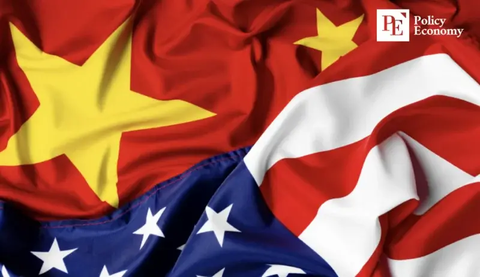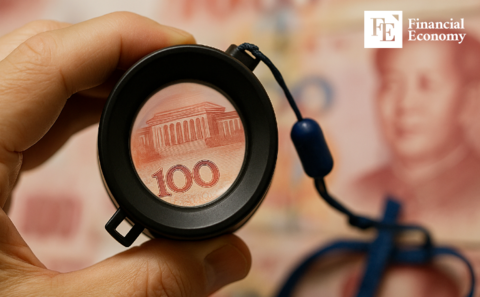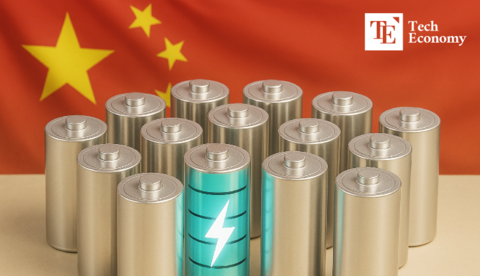Losing Leverage: Why China Is Struggling to Win Trump’s Tariff War
Input
Modified
Trump’s Tariff War Enters Second Act—And China Is Losing Ground Beijing Cornered: Why China’s Economic Defenses Are Crumbling Under U.S. Pressure From Defiance to Dilemma: China’s Silent Struggle in Trump’s Expanding Trade Offensive
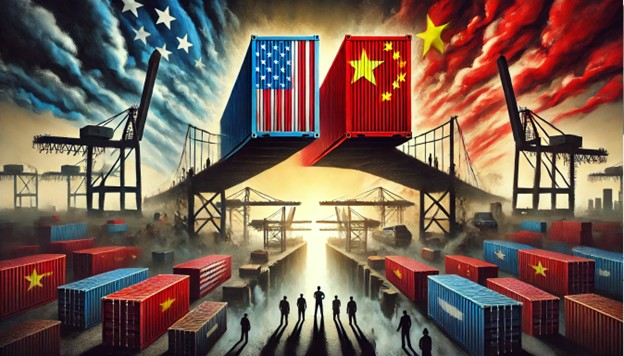
When Donald Trump returned to the U.S. presidency in January 2025, few expected his second term to escalate the trade war with China so swiftly—or so comprehensively. Within days, he reinstated high tariffs on Chinese imports, reaching rates as high as 145%. Soon after, his administration launched a flurry of economic actions: export licensing on Nvidia’s AI chips, new port entry fees on Chinese-owned ships, and legislation aimed at delisting hundreds of Chinese firms from U.S. stock exchanges. The message was clear: the gloves were off. What had started as a trade dispute in 2018 has now ballooned into a full-spectrum confrontation spanning shipping, technology, finance, and ideology.
In response, Beijing has pushed back with harsh rhetoric, claiming resilience and warning of retaliation. But beneath the surface, the reality is more fragile than firm. As the economic and political costs mount, three major challenges—domestic consumption limits, constrained trade adaptation, and an absence of retaliatory leverage—are making it increasingly clear that China is not winning this war. In fact, it may be struggling just to stay in the game.
The Cracks Beneath China’s Consumer Economy
One of the most repeated claims by Chinese officials and sympathizers is that the country’s massive internal market can offset the impact of lost U.S. exports. The argument rests on two facts: first, that exports to the United States now comprise just 2.5% of China’s GDP, and second, that consumption accounts for nearly half of economic growth. If domestic demand could be boosted even modestly, the thinking goes, the economy could weather the storm of American tariffs.
But the numbers tell a different story. Despite intense government efforts to spark spending—including a “Special Action Plan” rolled out in March to subsidize purchases of cars, home appliances, and smartphones—Chinese consumers remain cautious. The Consumer Price Index (CPI) remained in negative territory through March, suggesting ongoing deflation. The Producer Price Index (PPI), a leading indicator of economic health, has been declining for 30 consecutive months. Even online shopping, once China’s retail powerhouse, is now stagnating, with growth falling to just 7.2% last year.
Compounding these woes is the country’s ongoing real estate depression. Housing prices in 70 major cities have declined for nearly three years straight, and new home sales in 2024 were the lowest since the global financial crisis. With household wealth deeply tied to property, consumer sentiment has soured. The result? A dramatic drop in the contribution of consumption to GDP—from 82.5% in 2023 to just 44% in 2024.
Meanwhile, China’s fiscal room to stimulate growth is shrinking. In April, Fitch Ratings downgraded China's sovereign credit rating from A+ to A, citing a projected 8.4% fiscal deficit—one of the highest among similarly rated economies. This severely limits Beijing’s ability to inject new spending into the economy without risking financial instability. As prices fall, consumer confidence fades, and job security weakens, the much-touted power of domestic substitution is proving to be more illusion than reality.
Tariff Tactics and the Collapse of China’s Trade Loopholes
If consumption can’t save the economy, China’s fallback has traditionally been its industrial base and export engine. But here, too, the Trump administration has moved decisively to squeeze Beijing. Perhaps the most impactful change is the abolition of the U.S. “de minimis” rule, which had allowed low-cost goods under $800—such as clothing, gadgets, and accessories—to enter the country tariff-free. Effective May, these goods will face duties of up to 120%, cutting off a lifeline worth $40 billion annually and affecting millions of workers in Chinese manufacturing hubs.
This move especially targets China’s booming e-commerce exports through platforms like Shein, Temu, and AliExpress. Behind those brands lie sprawling networks of suppliers, logistics workers, and assembly-line employees—many of whom now face layoffs or long furloughs. And while Chinese factories have previously skirted U.S. tariffs by rerouting shipments through Vietnam, Mexico, or Cambodia, Trump’s second-term strategy includes punitive duties of up to 49% on goods suspected of being transshipped. The loopholes are being closed.
The impact has been swift and severe. Media reports confirm that factories in Zhejiang, Jiangsu, and Guangdong provinces are shutting down or idling operations. Workers are being sent on long, unpaid “holidays” starting May Day. At the Canton Fair, Chinese exhibitors openly admitted that goods are piling up in warehouses, unsold and unwanted. In Shenzhen’s once-bustling electronics market, vendors say foot traffic has dried up. According to Bloomberg, basic consumer goods like electric toasters and heating pads—products overwhelmingly sourced from China—are disappearing from U.S. shelves.
On the American side, the fallout has been more muted. While tariffs may raise prices for U.S. consumers, there is no equivalent threat to livelihoods. A National Public Radio (NPR) report revealed a spike in secondhand shopping, particularly among millennials who are adapting to higher costs by changing consumption habits. Chinese citizens, by contrast, face the risk of unemployment. A Morgan Stanley poll found that 44% of Chinese respondents feared job loss, while 40% worried about wage cuts.
Despite its industrial power, China is deeply dependent on its U.S. trade surplus. In 2024, the country recorded a $295 billion surplus with the U.S.—its largest with any single country in history. A prolonged disruption to this trade could unravel China’s already fragile growth narrative. The reality is sobering: as China bleeds export demand, it is losing both revenue and jobs at a time when it can least afford to.
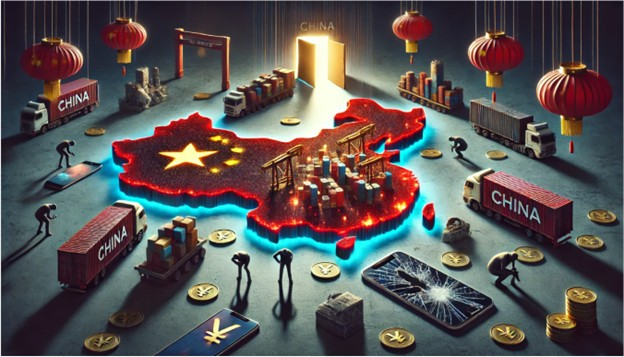
Beijing’s Rhetoric vs. Strategic Limitations
Faced with mounting pressure, Beijing’s official posture remains one of defiance. A spokesperson from the Ministry of Commerce declared that China “will never tolerate” any country siding with the U.S. at its expense and warned of “resolute countermeasures.” But for all the fire and fury, the toolbox of real options is nearly empty.
Talk of banning rare earth mineral exports, a strategy touted since 2010, is losing credibility. The United States now sources much of these minerals through third-party processors. A ban would only accelerate the diversification of supply chains—and push Beijing’s remaining leverage further into irrelevance. Similarly, threats to dump U.S. Treasury bonds would raise the yuan’s value, undermining Chinese exports and eroding the value of China’s own dollar holdings. Even former Treasury Secretary Janet Yellen noted that such moves would harm China more than the U.S.
Currency devaluation—another potential weapon—is also fraught with danger. While a weaker yuan would make exports more competitive, it would also raise import costs, fuel inflation, and trigger capital flight. Worse, it could provoke new rounds of sanctions under U.S. laws targeting currency manipulation.
In truth, China is largely boxed in. Its harsh public statements are increasingly seen as domestic propaganda—aimed at preserving national pride rather than projecting international strength. And yet, its vulnerabilities are mounting. Western media report growing unrest in manufacturing towns. Chinese analysts warn that extended hardship could trigger a repeat of the “White Paper Protests” that erupted after COVID lockdowns. Even China's tightly controlled public sphere is showing cracks.
Meanwhile, Trump has forged ahead with his strategy of “full-spectrum dominance.” Since January, he has signed more than 60 executive orders targeting Chinese economic interests. His administration is actively negotiating bilateral trade deals with 56 countries—excluding China. The goal is clear: isolate Beijing, restrict its market access, and rebuild strategic supply chains without Chinese inputs. For all the talk of resilience, China is now in retreat. The trade war that once seemed like a duel between equals is revealing a growing imbalance. And as Trump bluntly declared on April 16: “China needs to negotiate with us. We don’t need to negotiate with them.”




